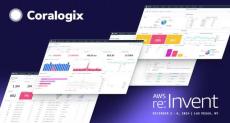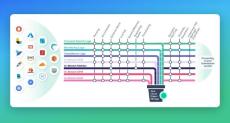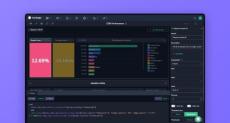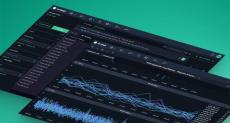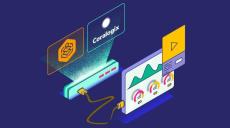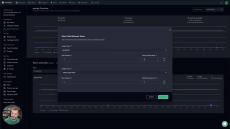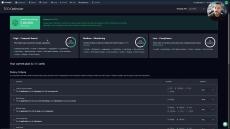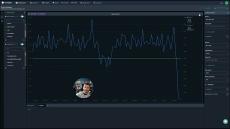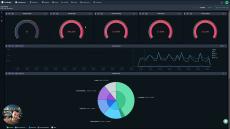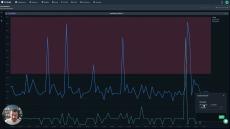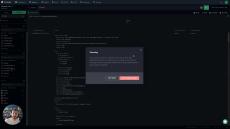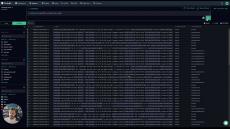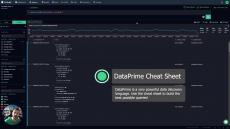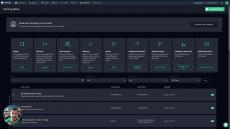|
By Emma Lampert
As we gear up for AWS re:Invent this December, we’re excited to share some of the latest innovations that make our platform stand out. Coralogix continues to evolve with powerful new capabilities designed to simplify observability, improve performance monitoring, and deliver actionable insights across your systems. From advanced visualization tools to AI-powered troubleshooting, these updates reflect our commitment to empowering teams with smarter, faster ways to solve complex challenges.
|
By Chris Cooney
When discussing what makes a product different, what makes it unique, we are led down the path of feature comparison. It is a natural thing to break down a product into its component parts to ease the process of weighing and measuring each layer. Does the authentication layer support SAML? Can platform components be defined in code? Beneath each of these features, however, is a foundational strata. A golden thread that enables and constrains each and every piece.
|
By Andre Scott
As the official implementation date approaches for the Digital Operational Resilience Act (DORA) – financial institutions and their information and communication technology (ICT) service providers, across the European Union are gearing up for a significant shift in their operational landscape.
When we talk about Real User Monitoring (RUM), it’s easy to get wrapped up in metrics—the hard numbers that tell us about our users’ experiences. But RUM is more than just data; it’s the foundation for improving performance, an essential key to user experience. The big question is: how do you accurately measure that experience across different kinds of applications?
In a world where microservices rule and distributed architectures are the norm, understanding how a single request flows through your system can be an overwhelming challenge. But don’t worry—there’s light at the end of the tunnel! And not just one light, but four.
|
By Emma Lampert
As your data continues to grow and time remains critical, making data-driven decisions has never been more important (and let’s face it, that’s no small feat). Luckily, our new Scheduled Reporting feature is here to help—automatically delivering your logs, metrics, and tracing data in visually-rich custom dashboards, exactly when you need them, directly to the inboxes of your chosen recipients.
|
By Chris Cooney
tldr: This post discusses how to measure CDN request locality without indexing a single log. The function of a CDN is to bring cacheable data, like pictures & videos, physically closer to your customers. This reduces latencies, and load on your backend servers. When measuring CDNs, there are some very common metrics.
|
By Markus Appel
Working at Coralogix, a leading full-stack observability platform, I recently faced an interesting challenge. The team I am part of is building the DataPrime query language and query engine, used to easily query logs and other observability data on the platform, usually in the form of Parquet files on AWS S3. Inside the engine, our DataPrime queries are transformed into query plans with SQL-like expressions, for example in filters.
|
By Chris Cooney
Network infrastructure is the hidden glue between servers. In AWS, it takes skill, knowledge and experience to build a network that can be monitored, will perform and is secure. A key source of information to determine the health of a network is the logs, but network logs suffer from a serious problem. They’re noisy, and they’re often difficult to parse, but by leveraging indexless observability, Coralogix customers can drive insights from data that would previously have been untouchable.
|
By Chris Cooney
AWS MediaTailor provides a wealth of information via metrics, but one key feature that is very difficult to track is the Transcoding performance. What is transcoding and why is performance important?
|
By Coralogix
Coralogix supports multi-tenancy, allowing multiple teams to be connected under a single organization. Some companies prefer separate teams to isolate data based on the environment it originates from like: Dev, QA, or Production. While others prefer to isolate the data based on organizational units like: Infrastructure, Security, and Application. Coralogix allows you to associate multiple teams with an Organization.
|
By Coralogix
Coralogix TCO Optimizer allows you to assign different logging pipelines for each application and subsystem pair and log severity. In this way, it allows you to define the data pipeline for your logs based on the importance of that data to your business.
|
By Coralogix
Let's explore the rich and powerful world of Custom Dashboards in Coralogix, with explanations of every widget, powerful functionality, flexible variables and much more. This video will leave no stone unturned!
|
By Coralogix
Explore the Archive Query mode in Coralogix Custom Dashboards, to visualize data that has long since left your archive, without paying for enormous indexing costs. Hold the data in your cloud account, and query, transform and enhance, with a single button press.
|
By Coralogix
Defining Alerts and Metrics in Coralogix is the easiest thing in the world. In this video, we'll explore three different alerts and metrics that can be generated, without writing a line of code.
|
By Coralogix
The Coralogix Remote Archive solution is incredibly powerful, but there are techniques to maximise the value you get out of the Coralogix platform.
|
By Coralogix
DataPrime is much more than a simply querying language. It's a data discovery language, allowing for powerful aggregations and insight generation, right in the Coralogix UI.
|
By Coralogix
In this video, we'll explore the functionality and best practices with Coralogix Remote Query for Logs. Coralogix supports direct, unindexed queries to the archive for both logs and traces, and stores data in cloud object storage directly in the customers cloud account, making for rock bottom retention costs, blazing fast performance and outstanding scalability.
|
By Coralogix
Coralogix Remote Query for Logs is incredibly powerful, enabling direct queries of archive data without the need to index. To get the most out of this feature, here are some simple tricks and techniques that you can use to make your queries even faster.
|
By Coralogix
There are numerous types of logs in AWS, and the more applications and services you run in AWS, the more complex your logging needs are bound to be. Learn how to manage AWS log data that originates from various sources across every layer of the application stack, is varied in format, frequency, and importance.
- November 2024 (4)
- October 2024 (1)
- September 2024 (5)
- August 2024 (4)
- July 2024 (2)
- June 2024 (4)
- May 2024 (3)
- April 2024 (2)
- March 2024 (4)
- February 2024 (2)
- January 2024 (7)
- December 2023 (5)
- November 2023 (2)
- October 2023 (2)
- September 2023 (9)
- August 2023 (14)
- July 2023 (6)
- June 2023 (9)
- May 2023 (12)
- April 2023 (7)
- March 2023 (10)
- February 2023 (7)
- January 2023 (4)
- December 2022 (4)
- November 2022 (6)
- October 2022 (14)
- September 2022 (6)
- August 2022 (7)
- July 2022 (9)
- June 2022 (10)
- May 2022 (7)
- April 2022 (9)
- March 2022 (11)
- February 2022 (10)
- January 2022 (7)
- December 2021 (9)
- November 2021 (8)
- October 2021 (7)
- September 2021 (7)
- August 2021 (8)
- July 2021 (5)
- June 2021 (6)
- May 2021 (8)
- April 2021 (8)
- March 2021 (15)
- February 2021 (10)
- January 2021 (15)
- December 2020 (16)
- November 2020 (10)
- October 2020 (21)
- September 2020 (14)
- August 2020 (15)
- July 2020 (9)
- June 2020 (11)
- May 2020 (10)
- April 2020 (13)
- March 2020 (8)
- February 2020 (2)
- January 2020 (3)
- December 2019 (1)
- September 2019 (2)
- August 2019 (1)
- June 2019 (2)
- April 2019 (1)
- March 2019 (1)
- January 2019 (1)
- December 2018 (1)
- October 2018 (2)
- August 2018 (1)
- July 2018 (3)
- June 2018 (1)
- May 2018 (1)
- April 2018 (1)
- November 2017 (1)
- September 2017 (1)
Coralogix helps software companies avoid getting lost in their log data by automatically figuring out their production problems:
- Know when your flows break: Coralogix maps your software flows, automatically detects production problems and delivers pinpoint insights.
- Make your Big Data small: Coralogix’s Loggregation automatically clusters your log data back into its original patterns so you can view hours of data in seconds.
- All your information at a glance: Use Coralogix or our hosted Kibana to query your data, view your live log stream, and define your dashboard widgets for maximum control over your data.
Our machine learning powered platform turns your cluttered log data into a meaningful set of templates and flows. View patterns and trends, and gain valuable insights to stay one step ahead at all times!


